L’horse chestnut (Aesculus hippocastanum) is a tree belonging to the family of Sapindaceae. It is also known as mad chestnut, bitter chestnut and especially, chestnut of India. This last vulgar name derives from the fact that, in ancient times, botanists believed it to be native to Asia. In reality it is a botanical species closest to us, native to the mountains of Albania and northern Greece, areas where it grows spontaneously, scattered in the forests of medium altitude. It was introduced in our country at the end of 1500 and today we find it from sea level up to 1200 m of altitude. It is grown as an isolated ornamental tree in gardens, or to form the shady trees of urban avenues. In some areas it is now sub-spontaneous.
Everyone knows that its fruits are toxic and particularly unpleasant if eaten fresh (nothing to do, therefore, with the most popular ones chestnuts). But it is also known that his seeds, properly treated, are rich in beneficial properties and exploited both in folk medicine and in modern phytotherapy. In this article we know the botanical characteristics of the horse chestnut, the cultivation techniques, the properties and the most common uses.
Horse chestnut description
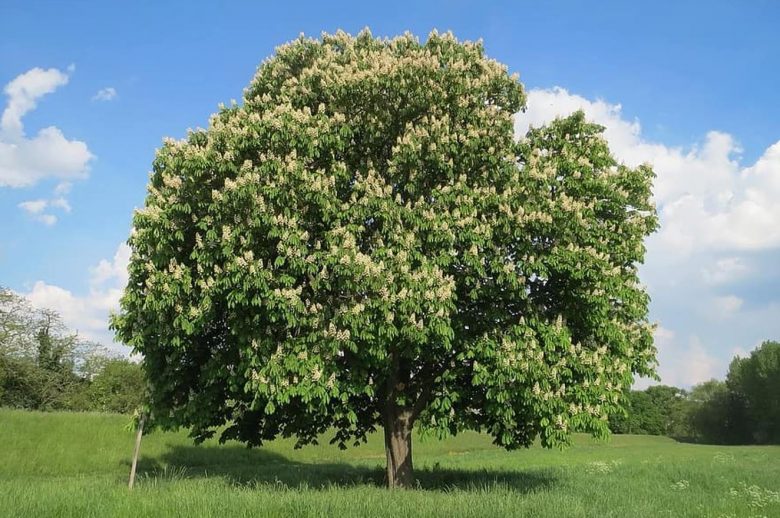
The horse chestnut is a medium-large deciduous tree, which can reach 20-25 m in height over more than 3 m in circumference of the trunk. It is on average long-lived, in fact it lives between 150-200 years. The trunk is robust, erect and very branched. It develops a very thick ovoid or pyramidal crown. The bark is brownish and smooth in younger trees, but over time it becomes gray, with scaly cracks. The young branches are robust and hairless, covered with lenticels and leaf scars. They have ovoid-pointed buds (up to 3.5 cm thick), very viscous and with dark reddish-brown pearls.
Leaves
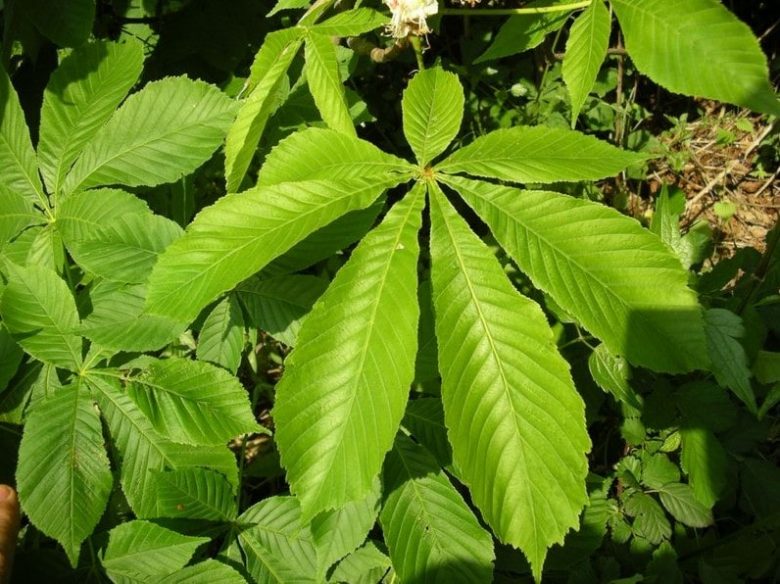
The leaves of the horse chestnut are opposite two by two on the branches and have a 15-20 cm long petiole. This is rounded in the middle part and widens at the apex, to support the leaflets, and at the base where it embraces the branch.
The leaves are of the palmato-digitate type, that is, they have 5-7 leaflets arranged like the fingers of a hand. The single leaflets are obovate with an acute apex and a notched margin. The central leaflet is always larger than the others.
The color of the leaves is bright green on the upper side, while it is lighter and more tomentose on the ribs, on the lower one.
Flowers
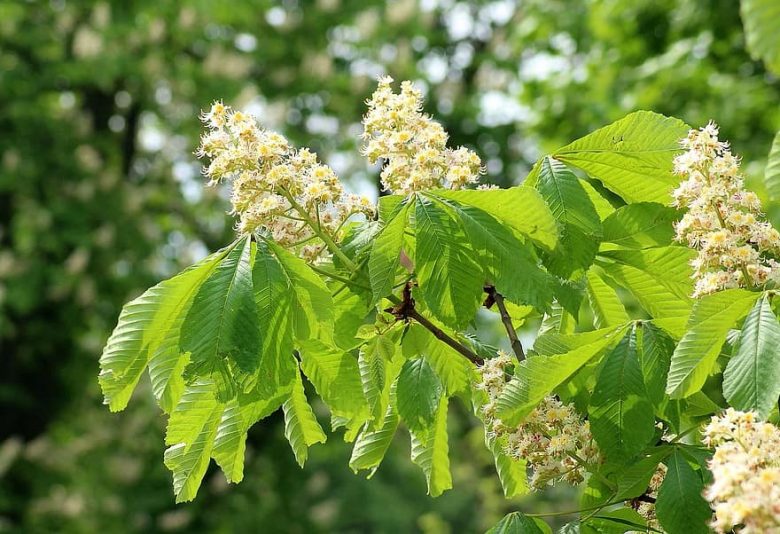
L’Aesculus hippocastanum it is a monoecious, monoclinic and hysterical tree species, with very fragrant flowers of the hermaphrodite type. The flowers are gathered in dense terminal panicles, up to 20 cm long, pyramidal in shape and with the axis facing upwards. The calyx is divided into 5 lobes, the corolla is made up of 4-5 unequal petals, white spotted with yellow and red points at the base. The stamens are 7, long and curved, the ovary is free, with 3 loggias surmounted by an elongated style. Flowering occurs from April to June.
The horse chestnut is a melliferous plant, with the flowers that are foraged by bees to collect red pollen and nectar, from which clear honey is obtained. However, it is very difficult to obtain a single-flowered horse chestnut honey, which is possible only in areas of high intensity.
Fruits
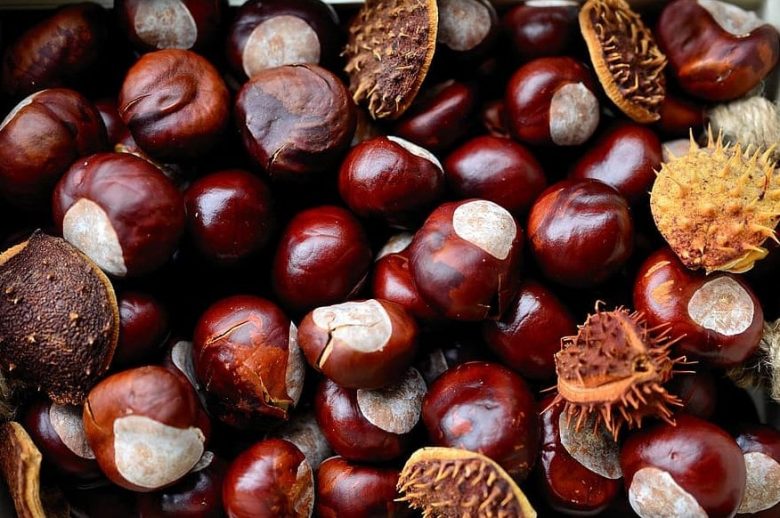
The fruits of the horse chestnut are dehiscent capsules with a thorny and greenish surface, which open in 2-3 parts when ripe. Inside there are 1-2 large sub-spherical seeds with a glossy surface, brown color, gray hilum at the base, irregular shape. The appearance, at first glance, is reminiscent of chestnuts (chestnuts matte). Fruiting takes place between September and October.
Wood
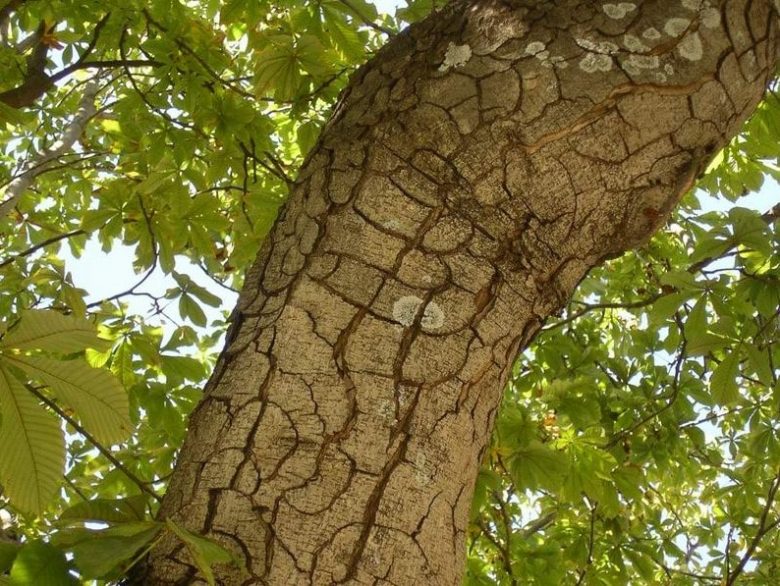
The horse chestnut wood is yellowish-white in color and does not have good technical characteristics. It is soft and without duration, it does not lend itself to being worked on. When it is particularly dry, it burns briskly, but too quickly, generating a low calorific value.
How to grow horse chestnut
Pedoclimatic needs
The horse chestnut is practically grown only for ornamental purposes, as it is rustic, fast-growing and capable of creating excellent shading. It tolerates low winter temperatures, even if it is not a plant that grows high in the mountains. Soils are ideal soft, fresh, with a good amount of organic substance. However, it also adapts well to poorer substrates, shuns only excessively saline ones. In the southern regions, young trees can suffer from a lack of water, with consequent yellowing of the leaves and the risk of desiccation. However, after the juvenile stage, the tree is more resistant to extreme climatic conditions. Likes bright locations, easily decays in low light conditions.
Variety of horse chestnut
For ornamental purposes, a species of hybrid horse chestnut is widespread, Aesculus x carneawith pink and red flowers, which is characterized by a more compact posture and greater resistance to pollution than the common horse chestnut.
Another very cultivated horse chestnut is the subspecies Aesculus hippocastanum var. Baumannii, a sterile variety that produces double white flowers spotted with yellow and red. Often in an urban environment the latter variety is chosen as it does not produce fruit and therefore “dirty” less than the classic horse chestnut when the matte chestnuts fall.
Reproduction
A horse chestnut tree can easily reproduce from seed. Crazy chestnuts should be sown immediately after harvesting, using soil mixed with peat. For planting, medium-sized pots can be used. The new plants appear in February and grow up to 75 cm in the first year. It is not advisable to plant them immediately, especially in areas with cold winters. It is better to let the young saplings pass the first year in pots, giving water regularly in summer and protecting in a sheltered place or cold greenhouse in winter. In the spring of the second year of life they can plant trees in their final home.
Sixth of implant
When planting a horse chestnut tree, its future growth and the thick foliage it develops must be taken into account. Adequate space must therefore be guaranteed to the plant either as an isolated specimen or along the rows, leaving at least 10-12 meters between one plant and another.
Horse chestnut pruning
The horse chestnut is a tree that does not require pruning and should be grown freely. The pruning interventions they are limited to cleaning dry or damaged branches.
Parasites
The most fearsome pest for the horse chestnut is the moth Cameraria ohridella, called the horse chestnut leaf miner. This species, reported for the first time in Macedonia, has been present in Italy since 1992, found in the province of Bolzano. From there it gradually spread to the north-central regions. The parasite’s larvae dig out leaf mines, eventually occupying the entire flap. The leaves, in spring-summer, are easily attacked by a large number of miners, so they dry up and fall. The horse chestnut tree attacked undergoes a strong vegetative decay and without treatments risks perishing. Among the products allowed in organic farming, the most effective against horse chestnut miner larvae is bacillus thuringiensis var. kurstakiwhile against adults it is possible to resort toazadirachtin. Obviously, in public parks, these interventions must be coordinated by the competent institutions.
Zootechnical uses of Indian chestnuts

The name hippocastanum derives from the Greek, from the composition of the terms híppos= horse and cástanon = chestnut, which we can literally translate as chestnut for horses. It is therefore clear the reference to equines, animals very fond of fruits and which can eat them as they are without risk of intoxication. Other animals that eat mad chestnuts without problems are deer, while pigs reject them in a decisive way and hens and chickens are intoxicated by them.
For zootechnical use, therefore, fresh fruits are not used, which among other things undergo rapid deterioration, but dried fruits and then reduced to flour. In this way, potentially toxic substances are eliminated and an excellent feed for animals is obtained, rich in starch and sucrose. However, this use is also no longer in use.
Active ingredients and properties of horse chestnut
But let’s see now the interesting beneficial properties horse chestnut. The main chemical constituents, contained in the seeds and in the bark, are: the triterpene saponosides aescin and cryptoescin A, flavonoids such as quercetin and kaempferol, coumarin glucosides (aesculin), tannins, allantoin, starches, fatty acids, etc. From these active principles derive properties: astringent, vasoprotective, anti-haemorrhoidal, anti-edema.
Indications
The best known and most studied therapeutic action of horse chestnut is the vaso-constricting one. This plant has the ability to narrow the lumen of blood vessels, tone them, normalize their permeability and make altered and inflamed walls normal. It is therefore useful in the treatment of hemorrhoids, phlebitis, varicose ulcers, peripheral venous insufficiency, capillary fragility. It is also able to remove itching and pain, favoring the absorption of excess fluids that stagnate in the tissues.
Its astringent action is also usefully expressed on milder and generalized affections, for example on swollen extremities and on skin defects due to dilated superficial vases (couperose).
Warnings
All the actions described are mainly for internal use. However, the poor tolerability of our gastrointestinal system to the active ingredients of horse chestnut should not be underestimated, so homemade preparations are not recommended. If you want to use horse chestnut extracts for therapeutic use it is first of all necessary to hear the opinion of your doctor, and then buy only herbal products with tolerable and standardized dosages, therefore safe.
At this link you will find a series of horse chestnut-based products, especially in the form of tablet supplements.
Domestic uses of horse chestnut
In the home, it can be limited to external use, using the flour obtained from the seeds. The seed must be collected as soon as it falls to the ground, cut in two and dried at a temperature of 40-50 ° C. A little flour can be obtained from the dried seeds with a mortar.
For swelling of the extremities, couperose, mild hemorrhoidal inflammations it is possible prepare the decoction at home at a dosage of 6 g per 100 ml of water. With the filtered liquid you can do washes, foot baths, packs, compresses to be applied on the areas of interest for a maximum of 10-15 minutes. Avoid rubbing the area and still evaluate individual sensitivity by initially using diluted preparations.

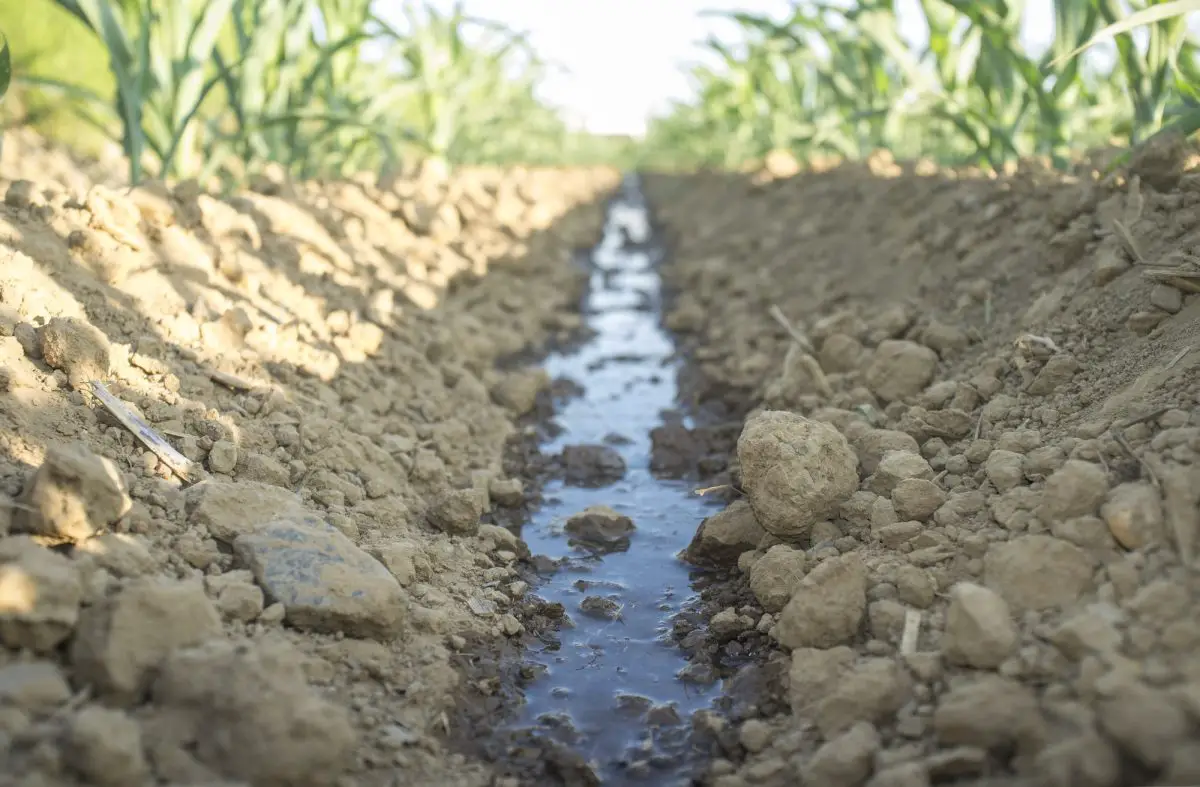
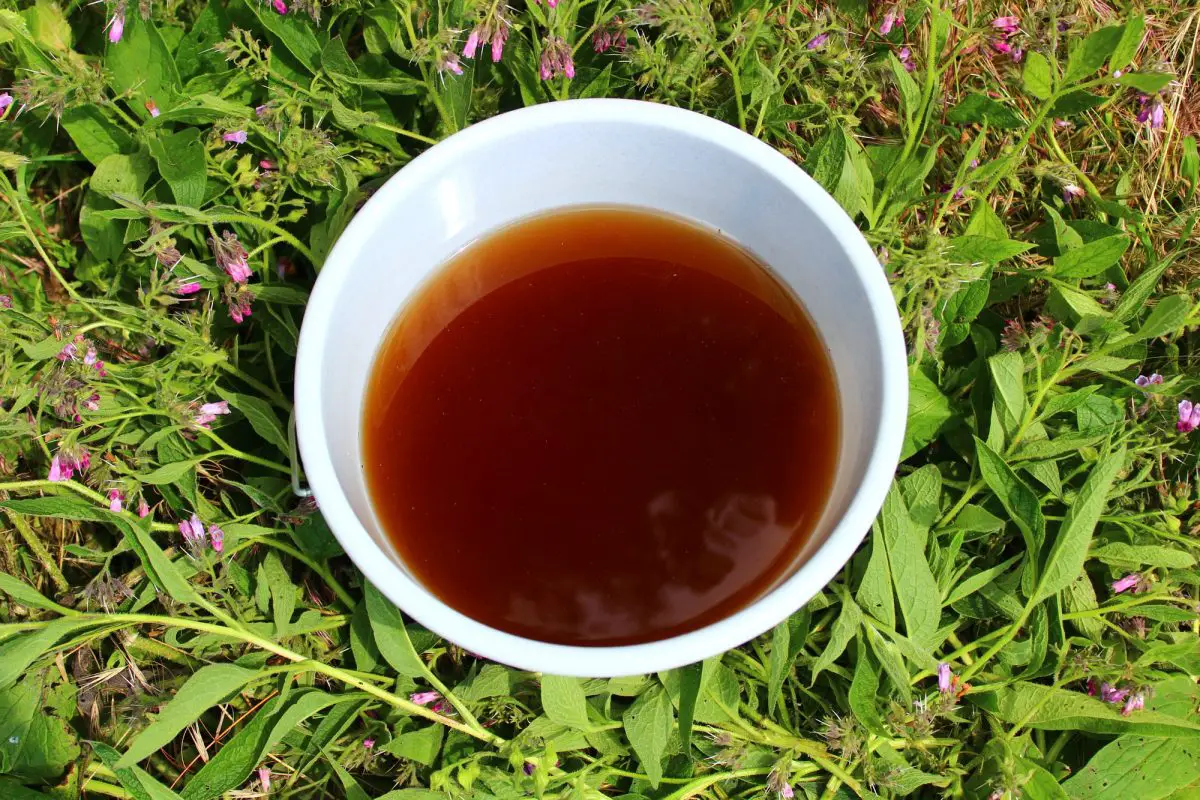
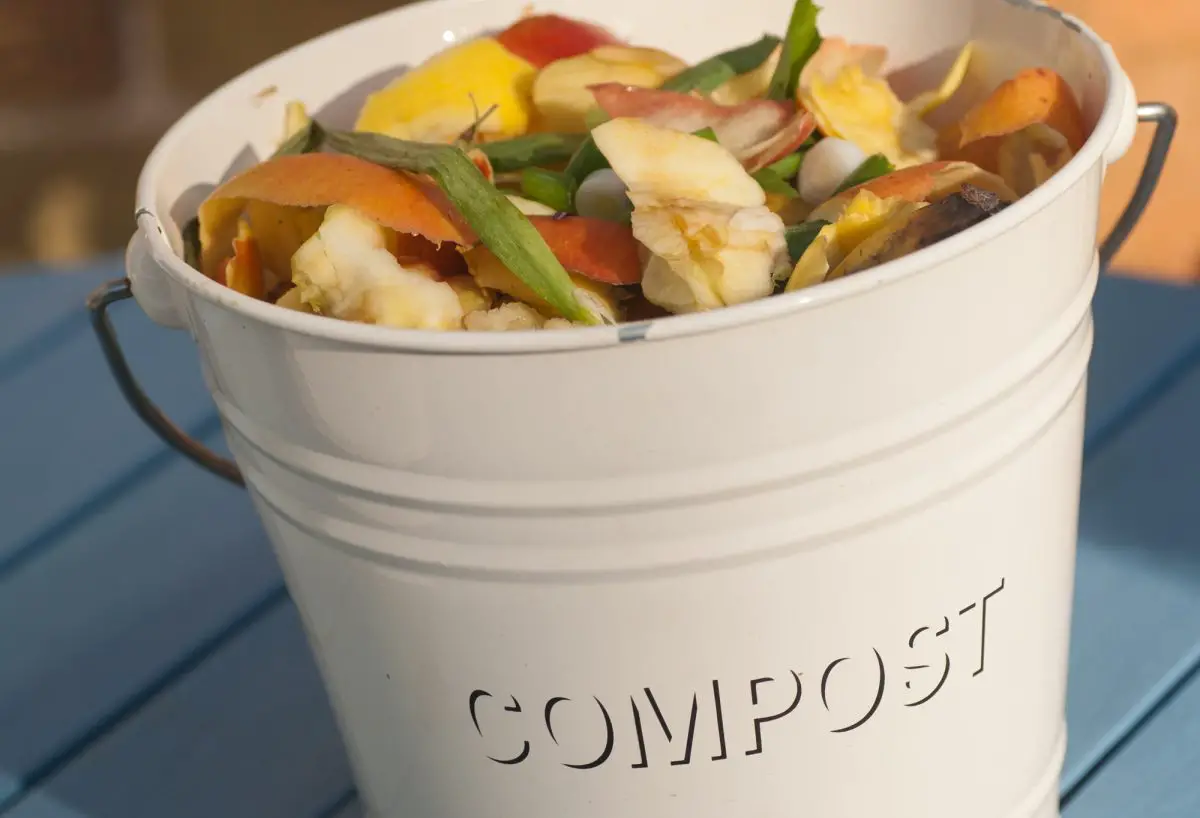
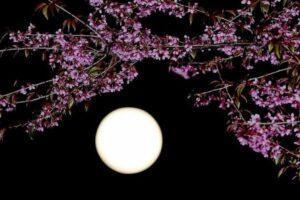
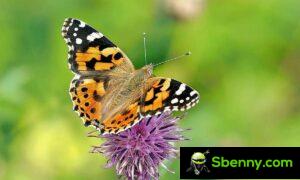

Start a new Thread